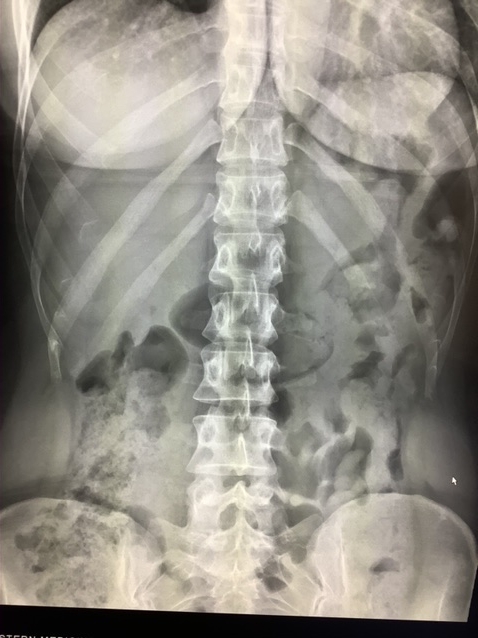Pancreatic Ascites
Pancreatic ascites is a medical condition that arises when fluid accumulates in the abdominal cavity due to leakage from the pancreas. This condition is often related to pancreatitis, a disease where the pancreas becomes inflamed. Understanding pancreatic ascites is crucial for prompt diagnosis and treatment.
Causes and Risk Factors of Pancreatic Ascites
Pancreatic ascites can occur due to various reasons, but it’s primarily associated with chronic pancreatitis. Chronic alcoholism is a significant risk factor. Other causes include pancreatic duct obstruction and trauma. Identifying these factors is vital in preventing and managing pancreatic ascites.
Symptoms of Pancreatic Ascites
The symptoms of pancreatic ascites may vary but typically include abdominal discomfort, bloating, and difficulty breathing due to pressure on the diaphragm. Weight loss and fatigue are also common. Recognizing these symptoms early can lead to a quicker diagnosis.
Diagnosis of Pancreatic Ascites
Diagnosing pancreatic ascites involves several steps. Medical history and physical examination are the first steps. Imaging tests such as abdominal ultrasound, CT scans, and MRI are crucial for confirming the presence of excess fluid and understanding its source.
Role of Imaging in Diagnosing Pancreatic Ascites
Abdominal Ultrasound in Detecting Pancreatic Ascites
Abdominal ultrasound is often the first imaging test employed. It’s a non-invasive method that uses sound waves to create images of internal organs. In the case of pancreatic ascites, ultrasound helps detect the presence of fluid in the abdominal cavity. It can also assess the size and structure of the pancreas, identifying potential causes like tumors or cysts.
CT Scan for Detailed Imaging
Computed Tomography (CT) scans are more detailed than ultrasounds. They use X-rays to create cross-sectional images of the body. In pancreatic ascites, a CT scan can reveal the extent of fluid accumulation and provide detailed images of the pancreas. It helps in identifying complications such as pancreatic duct obstruction or necrosis (tissue death).
MRI for Comprehensive Pancreatic Imaging
Magnetic Resonance Imaging (MRI) offers even more detailed images, particularly useful in complex cases. MRI uses magnetic fields and radio waves to produce detailed images of organs and tissues. For pancreatic ascites, MRI can give a comprehensive view of the pancreatic ducts and tissues, helping identify blockages or damages that might not be visible on a CT scan.
Endoscopic Retrograde Cholangiopancreatography (ERCP)
ERCP is a specialized technique combining endoscopy and fluoroscopy (a type of X-ray). It’s particularly useful in diagnosing conditions affecting the bile ducts, pancreatic ducts, and gallbladder. In pancreatic ascites, ERCP can help identify leaks in the pancreatic ducts and assist in planning interventions to repair these leaks.
Importance of Imaging in Treatment Planning
Imaging is not just crucial for diagnosis; it also plays a significant role in treatment planning. For instance, if fluid drainage is required, imaging guides the placement of needles or catheters to drain the fluid safely and effectively. In surgical cases, pre-operative imaging helps surgeons plan their approach, minimizing risks and improving outcomes.
Regular Imaging for Monitoring
Once diagnosed and treated, patients with pancreatic ascites require regular monitoring to ensure the effectiveness of the treatment and to prevent recurrence. Follow-up imaging, such as periodic ultrasounds or CT scans, helps track the condition’s progression and allows for timely adjustments in the treatment plan.
Treatment Options for Pancreatic Ascites
The treatment of pancreatic ascites depends on the underlying cause. Initial management often involves draining the excess fluid to relieve symptoms. Nutritional support and avoiding alcohol are also essential. In some cases, surgery may be required to repair pancreatic damage.
Importance of Early Intervention in Pancreatic Ascites
Early intervention is important in managing pancreatic ascites effectively. Prompt fluid drainage and lifestyle modifications can prevent complications. Regular monitoring and follow-up imaging tests are essential to ensure successful treatment.
Complications of Pancreatic Ascites
If left untreated, pancreatic ascites can lead to severe complications, including infection, organ dysfunction, and nutritional deficiencies. Timely medical intervention is vital to avoid these complications.
The Role of Regular Monitoring and Imaging in Preventing Complications
Regular monitoring, including follow-up imaging tests, is essential in preventing complications from pancreatic ascites. These tests help track the progress of the condition and the effectiveness of the treatment plan.
Conclusion:
Understanding pancreatic ascites is crucial for early detection, effective treatment, and preventing complications. If you experience symptoms or have risk factors for pancreatic ascites, seek medical advice promptly. Regular check-ups and imaging tests play a significant role in managing this condition effectively.

